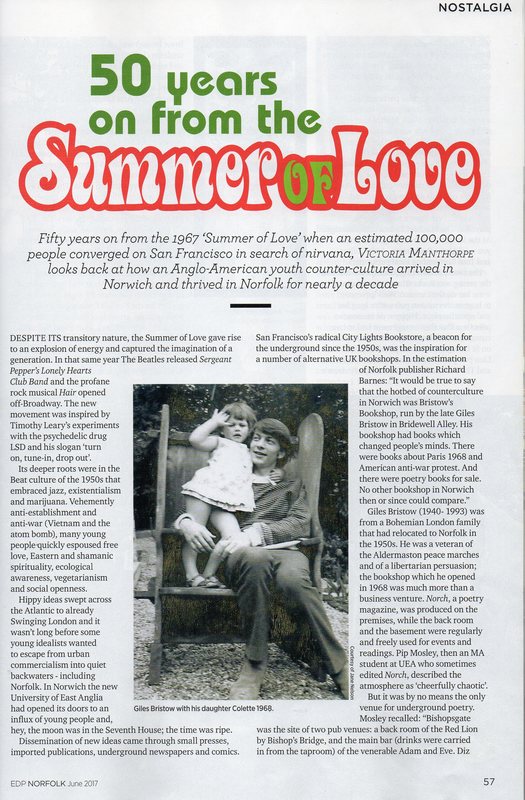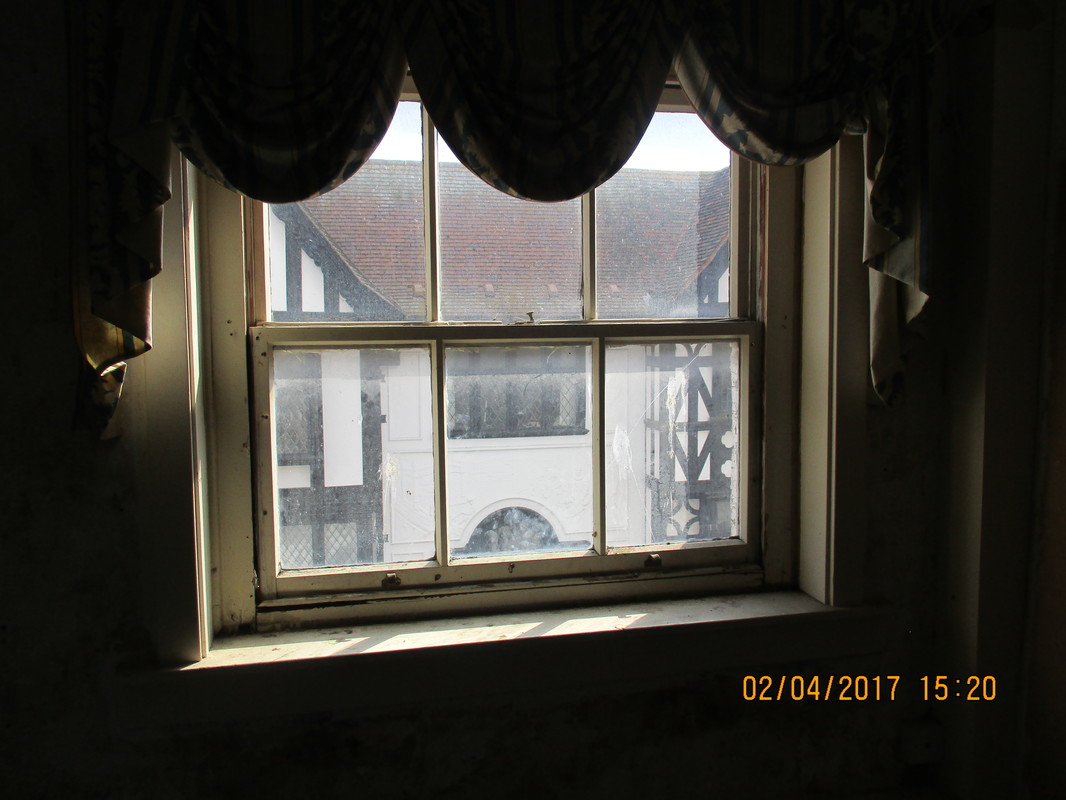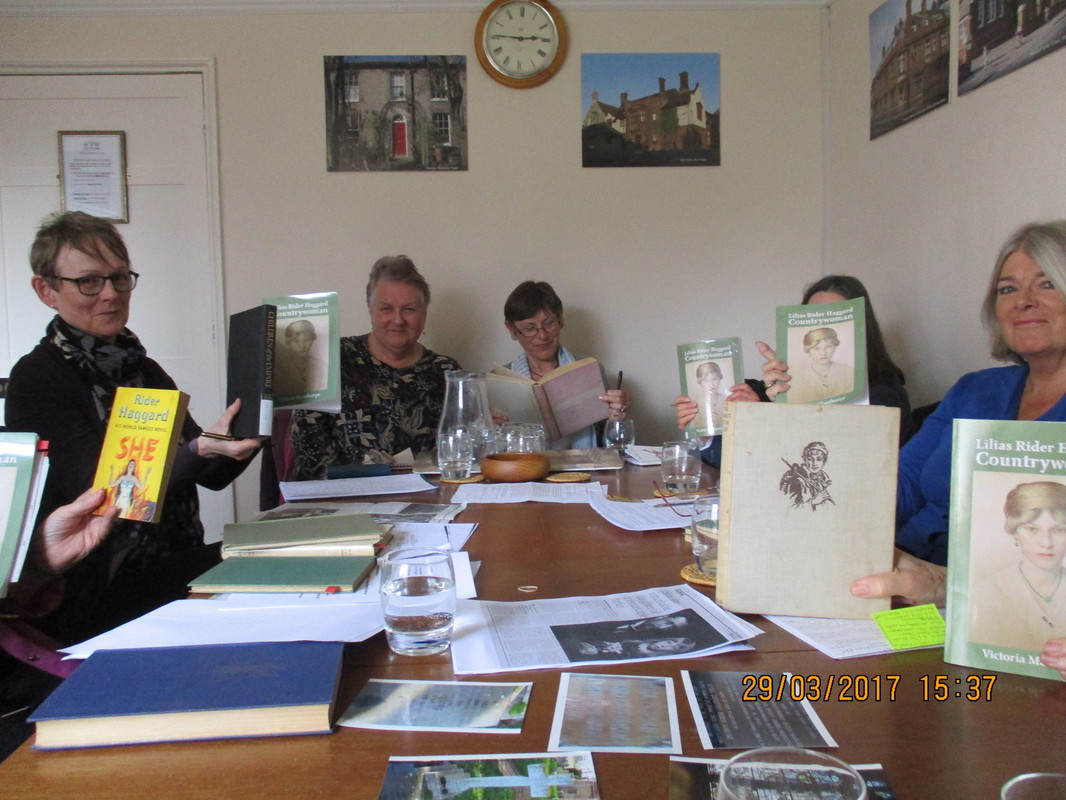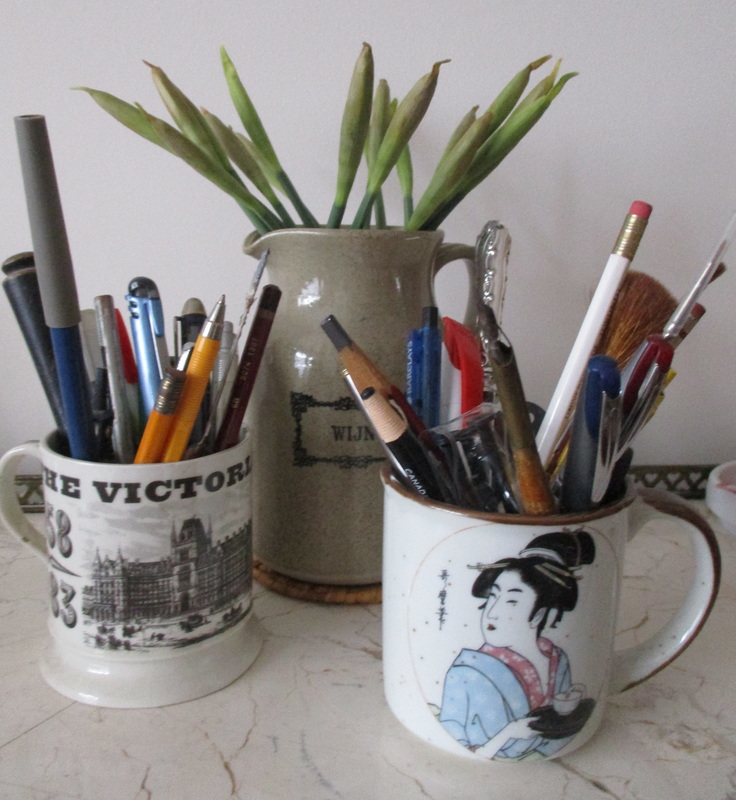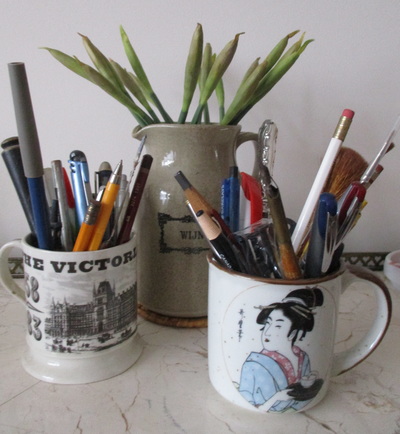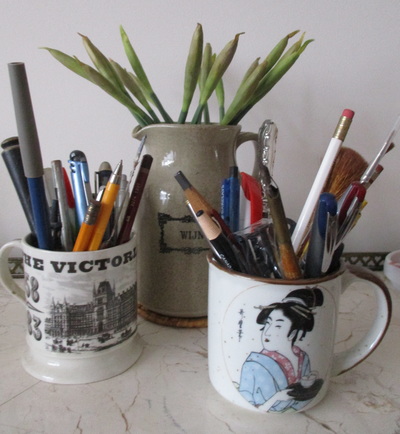|
June 2017 - EDP Norfolk '50 Years on From the Summer of Love' The Hippie Counter Culture in East Anglia I really enjoyed researching this article and meeting up with people who were young and hip in Norwich in the late 1960s and early 1970s.
More on the Haunted Hotel project coming up soon. Filming goes ahead on the little ghost story ' Room 27b' early in July. Meanwhile, I'm preparing a paper for the SISJAC Conference on The Western Merchants in East Asia in the nineteenth century to be held at the Sainsbury Institute, Norwich on June 22-23. I'm really looking forward to meeting historians who specialise in this area. Sunday April 2, Matthew McGuchan for Film Suffolk welcomed writers, directors and crew of 8 ghost stories to the Old White Horse Hotel in Ipswich where the segments will be filmed in May/June this year. It was great to meet everyone and get an idea of the character of the dilapidated former coaching inn and which rooms and areas can be used. My story invokes the WW2 bombing raids on Ipswich and post-war social changes. The picture is a view from top floor window – like a proscenium arch on the dramas to come. Thank you to the Norwich Society Local History Bookclub for inviting me to talk about Countrywoman. So much knowledge and enthusiasm.
The Bloomsbury Group of modernist artists and writers has long attracted the highest literary and critical attention. But Bloomsbury has also become a literary industry fed by a seemingly endless stream biographies, memoirs, recreations, discourses, semi-fiction, and television and film dramas. And there seems to be no end to the descendants and friends of the members of the group who are ready to join the production line. But here is an alternative for you: the Meynells, their family and circle - The Bayswater Group! At the heart of the group are the writers Alice Meynell née Thompson (1847-1922) and her publisher husband Wilfrid Meynell. Alice’s sister Elizabeth (Mimi) Butler (1846-1933) was a leading battle painter of the mid Victorian period. Alice and Mimi were daughters of the concert pianist Christiana Weller and Thomas Thompson, a gentleman of the West Indies. They were raised in the wild landscape and barely accessible villages of the Ligurian littoral and ‘finished’ in the artistic salons of Kensington. Thompson’s fortune came from sugar and slavery and he himself was illegitimately descended from a Creole woman. This was quite a different colonialism from the Jackson’s (Virginia’s mother) and Strachey’s India. Both Alice and Mimi adored the landscape and culture of their Mediterranean upbringing and both converted to Catholicism. Not for them a ‘room of one’s own’. Both shared their space with large, loving families. Alice’s poetry and essays made her internationally famous and she toured and lectured extensively. She also raised eight children. Alice and Wilfrid’s home at 47 Palace Court W2 became a nexus for the London literati a generation before Bloomsbury but overlapping with it. The Meynell’s rescued the destitute poet Francis Thompson and supported the novelist George Meredith. Alice was a political radical and supporter of the Women’s Suffrage Movement. Is it possible that Catholicism, with its acknowledgment of the spiritual feminine in the person of the Virgin Mary, contributed more possibility of cultural development for a woman than Protestantism or atheism? Now here’s the challenge to Bloomsbury. In the midst of a patriarchal culture, inspired by and in dialogue with Elizabeth Barrett Browning, Alice found a purely female literary voice. The critic Tala Schaffer suggests that Virginia Woolf deliberately suppressed Meynell’s influence on her – instead promoting herself as the founder of the female literary tradition. Schaffer accuses Woolf of subverting and appropriating the past in an act of ‘modernist self-fashioning’[1]. Having been extraordinarily famous for her battle paintings (The Roll Call, Scotland Forever, The Remnants of an Army), Mimi gave up her public work when she married the maverick army officer William Butler although sketchbooks from later years survive.. Two of Alice and Wilfrid’s children, Francis (1891-1975) and Viola (1885-1956), carried on the literary work. Francis worked as a poet and printer, Viola as a novelist and poet. It was Viola who gave refuge to and helped DH Lawrence in his early difficult times. Alice Meynell, like Virginia Woolf, suffered from depression. [1] Writing a Public Self: Alice Meynell’s ‘Unstable Equilibrium’ in Women’s Experience of Modernity. Ann Ardis and Leslie Lewis (eds) (Baltimore: John Hopkins University Press. 2003) pp18, 2. Quoted by Ann Ardis in Modernism and Cultural Conflict 125.
Earlier this week members of the East Anglian Writers Steering Committee enjoyed watching A Pleasant Terror : The Life and Ghosts of M.R. James. The 20-year old biopic produced by Seventh House Films was directed by Clive Dunn and unravelled the many aspects of MR James life as an antiquarian, educator and writer of ghost stories. There were sequences of dramatization with Michael Elwyn playing MR James, the one time Provost of King College Cambridge and Eton College, and commentaries that included his biographer, Michael Cox, Jonathan Miller, D.J. Taylor, Julia Briggs, Ruth Rendell and Ronald Blythe - all looking considerably younger.
The committee was particularly impressed by the amount of information packed into the I-hour TV film and by the lack of repetition which is so often a feature of modern documentaries. MR James continues to be a popular author and recognised as a master of the genre. The committee is planning to offer a wider showing to members of East Anglian Writers. Details to come via EAW website. |
Victoria Manthorpeauthor and feature writer Blog
Your email will only ever be used to send you new posts and you can unsubscribe at any time. For more information, please check Victoria's privacy statement.
Archives
April 2024
Categories
All
|
